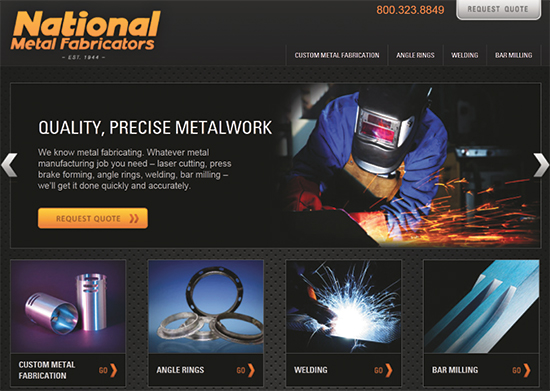Six Ways to Make Your Website Produce More Leads
January 1, 2013Comments
Getting prospects to check out your website is good--but turning them into leads and then clients is even better. Do you know how to gather client info and use it to increase conversions?
 Is your website delivering a steady flow of qualified leads? Is it working for your company as productively as it could?
Is your website delivering a steady flow of qualified leads? Is it working for your company as productively as it could?
The fact is, as a manufacturing company, most of your future clients already use the Internet for research and purchasing. Knowing how to effectively communicate with them online could be the key to boosting your business. With that in mind, here’s a look at the powerful impact leads have on your sales numbers, as well as six ways to increase the number of new leads you bring in.
Why Leads Matter
Whether you’re new to running a website or an experienced professional, it’s still easy to get so caught up with the numbers of your fans or followers that you forget the real purpose of your website: generating leads to convert into clients. Here’s why leads are so crucial.
• Leads are future clients. Leads are prospects, and finding prospects is one of the most important components of any good marketing campaign. Your website is the perfect source for finding potential clients, as any visitor coming to your site likely will already have some level of interest in what you offer.
• Closing sales takes time. Gathering leads provides a to nurture relationships with prospects until they’re ready to purchase. In most cases, a website visitor won’t be ready to make a buying decision immediately; that’s why you need to engage him until the point of sale.
• Conversion rates matter. By tracking leads and learning how and when they become buyers or subscribers, you can determine your conversion rate. This proves valuable because it illustrates how well your website is working. Among the key questions you should seek answers to: How often do visitors subscribe to your e-newsletter after clicking around your website, and how many visitors wind up buying from you? Armed with this information, it’s easier to know how much you should invest in increasing conversions. Would a qualified visitor conversion be worth $20, $40? It also will give you an idea of how many conversions you can expect within a certain marketing budget.
• Nurturing leads means more sales. Build relationships with your leads and they will become much more likely to convert to customers. A study from Forrester Research shows that companies that excel at lead nurturing enjoy a 50-percent gain in sales, while reducing costs by 33 percent. That’s a stat to motivate. Here’s what the researchers say: “Today’s empowered technology buyers are two-thirds of the through their buying process before they engage with tech vendors’ sales teams. Forrester believes that a robust lead-nurturing program gives tech companies the opportunity to engage with buyers in the early, formative stages of their buying cycles to develop a personal relationship that will shape the buying process and affect sales outcomes.”
• Not nurturing leads means lost sales. Conversely, taking a hands-off approach to lead nurturing and deciding not to work with potential clients can significantly harm your business. The fact is, 79 percent of marketing leads don’t immediately convert into sales. Why? Primarily due to a lack of lead nurturing. Knowing this, why wouldn’t you work to nurture leads?







